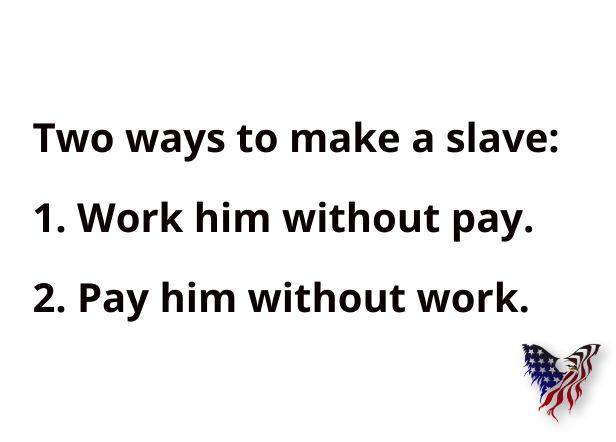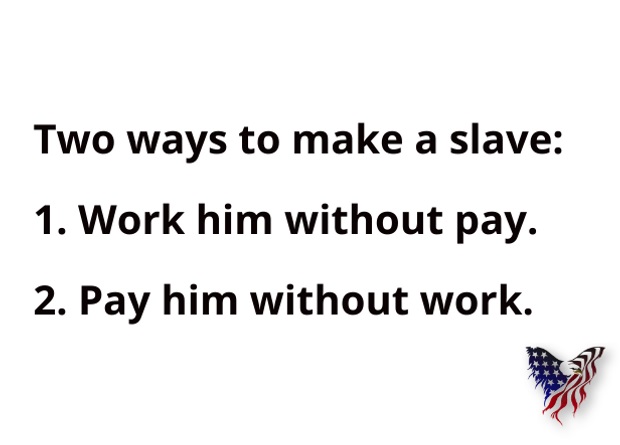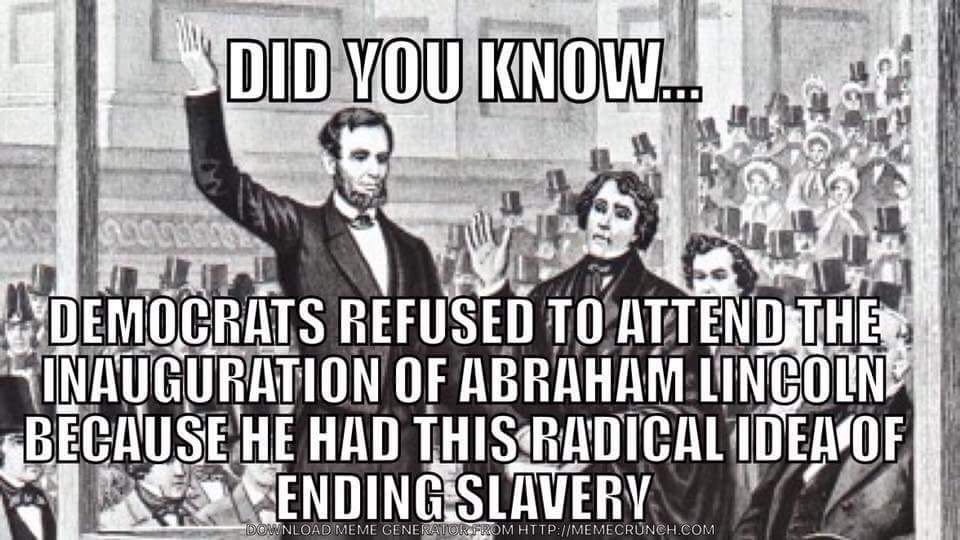When a single man can issue an authoritative command to every person in a State to wear a mask or be denied the ability to buy and sell… and the people go along with it… It’s hard to argue that man isn’t a dictator or that we’re not all Slaves.
Tag: Slaves
The Inauguration Of Abraham Lincoln
Democrats haven’t been this mad since Republicans freed the slaves.
The first inauguration of Abraham Lincoln as the 16th President of the United States was held on March 4, 1861, on the East Portico of the United States Capitol in Washington, D.C.. The inauguration marked the commencement of the first term of Abraham Lincoln as President and the only term of Hannibal Hamlin as Vice President. The presidential oath of office was administered to Lincoln by Roger B. Taney, Chief Justice of the United States.
This was the first time Lincoln appeared in public with a beard, which he had begun growing after being elected president, in response to a written request by 11-year-old Grace Bedell. This effectively made him the first President to have any facial hair beyond sideburns.
On Inauguration Day, Lincoln’s procession to the Capitol was surrounded by heavily armed cavalry and infantry, providing an unprecedented amount of protection for the President-elect as the nation stood on the brink of war. During the 16 weeks between Lincoln’s victory in the 1860 presidential election and Inauguration Day, seven slave states had declared their secession from the Union and formed the Confederate States of America.
Train ride to Washington
An entourage of family and friends left Springfield, Illinois with Lincoln on February 11 to travel by train to Washington, D.C. for the inauguration. This group including his wife, three sons, and brother-in-law, as well as John G. Nicolay, John M. Hay, Ward Hill Lamon, David Davis, Norman B. Judd, and Edwin Vose Sumner.
For the next ten days, he traveled widely throughout the country, with stops in Indianapolis, Columbus, Pittsburgh, Cleveland, Buffalo, Albany, New York City, and south to Philadelphia, where on the afternoon of February 21, he pulled into Kensington Station. Lincoln took an open carriage to the Continental Hotel, with almost 100,000 spectators waiting to catch a glimpse of the President-elect. There he met Mayor Alexander Henry, and delivered some remarks to the crowd outside from a hotel balcony. Lincoln continued on to Harrisburg. Then, because of an alleged assassination conspiracy, Lincoln traveled through Baltimore, Maryland on a special train in the middle of the night before finally completing his journey in Washington.




